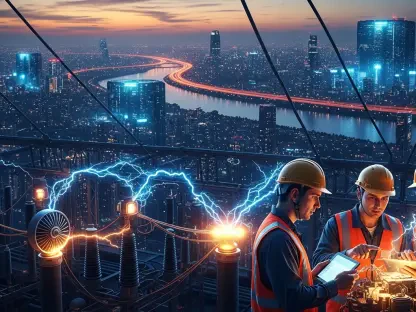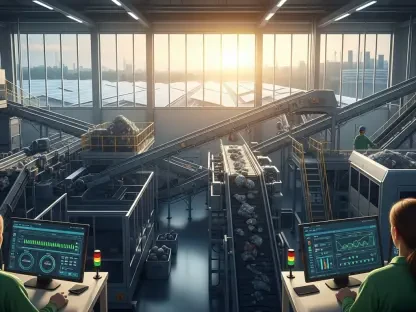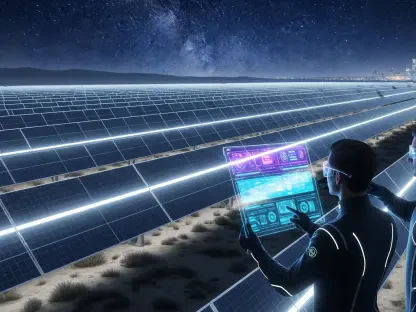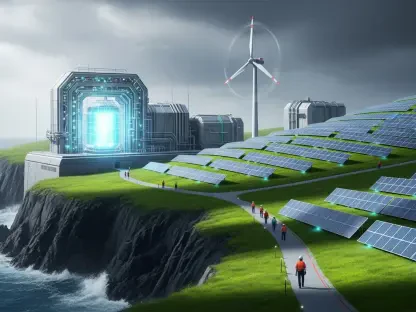Pioneering a New Energy Frontier for Tech and Sustainability
In an era where global energy demand is skyrocketing, driven by the relentless expansion of digital infrastructure and artificial intelligence, a transformative shift is emerging in the power sector. Amazon, a titan of technology, has stepped into the nuclear energy arena with a bold investment in the Cascade Advanced Energy Facility outside Richland, Washington. This project, centered on small modular reactors (SMRs), signals a potential game-changer for how energy-intensive industries address sustainability. The purpose of this analysis is to dissect the market dynamics surrounding Amazon’s involvement, explore current trends in nuclear innovation, and forecast the implications for both regional and global energy markets. By examining this intersection of private capital and advanced nuclear technology, the discussion aims to uncover strategic opportunities and challenges in meeting the carbon-free energy needs of tomorrow.
Decoding Market Trends and Nuclear Energy’s Rising Role
Surge in Energy Demand and the Push for Carbon-Free Solutions
The energy market is undergoing a profound transformation as digital economies expand, with data centers and AI technologies consuming vast amounts of power. Industry estimates suggest that global data center electricity usage could double by the end of this decade, placing immense pressure on existing grids. Traditional fossil fuel sources are increasingly untenable due to environmental regulations and corporate decarbonization goals, creating fertile ground for alternative energy solutions. Nuclear power, long sidelined by cost and safety concerns, is witnessing a resurgence through SMRs, which promise compact, scalable, and safer operations compared to conventional reactors. Amazon’s foray into this space with a $500 million investment in X-energy reflects a broader market shift where tech giants are not just consumers but active shapers of energy innovation.
Small Modular Reactors as a Disruptive Market Force
SMRs are redefining the nuclear energy landscape with their modular design, allowing for phased deployment and reduced land requirements. The Cascade project, leveraging X-energy’s Xe-100 high-temperature gas-cooled reactor, plans an initial capacity of 320 megawatts (MW) across four units, with potential expansion to 960 MW via 12 units. This scalability aligns with market needs for flexible power sources that can adapt to fluctuating demands, particularly in high-growth regions like the Pacific Northwest. Unlike traditional nuclear plants that span over a square mile, SMRs occupy just a few city blocks, addressing spatial constraints and lowering upfront capital costs. Market analysts view this technology as a bridge between renewable intermittency and baseload power needs, positioning SMRs as a critical component in future energy portfolios.
Public-Private Partnerships Fueling Nuclear Investment
A notable trend shaping the nuclear market is the rise of public-private collaborations, exemplified by Amazon’s partnership with Energy Northwest, a consortium of 29 public utility districts and municipalities. This synergy combines private sector funding with public operational expertise, mitigating financial risks while accelerating project timelines. Additionally, international agreements, such as the one involving Korea Hydro & Nuclear Power and Doosan Enerbility, target over five gigawatts of new nuclear capacity in the U.S. by 2039, backed by investments up to $50 billion. Such global cooperation underscores a market consensus on SMRs as a viable solution for energy security, though regulatory hurdles and public perception remain significant barriers to widespread adoption. The convergence of corporate and governmental interests is creating a robust ecosystem for nuclear innovation, potentially reshaping investment patterns in clean energy.
Projecting the Future of SMRs in Energy Markets
Growth Trajectories and Technological Advancements
Looking ahead, the market for SMRs is poised for substantial growth, driven by technological refinements and increasing energy demands. Projections indicate that by the mid-2030s, when facilities like Cascade are expected to be operational, SMRs could account for a significant share of new nuclear capacity worldwide. Advances in reactor safety, such as the Xe-100’s inherent design features that minimize meltdown risks, are likely to bolster investor confidence and ease regulatory pathways. Furthermore, the modular nature of these reactors supports incremental scaling, aligning with market preferences for cost-effective, adaptable energy solutions. As digitalization continues to drive power consumption, SMRs could emerge as a cornerstone of grid stability, especially in regions with limited space for large-scale renewables.
Economic and Policy Influences on Market Adoption
Economic incentives and policy frameworks will play a pivotal role in shaping the SMR market over the next decade. Governments are increasingly offering subsidies and tax breaks for carbon-free energy projects, which could lower the financial barriers for private investors like Amazon. However, the Nuclear Regulatory Commission’s approval processes remain a potential bottleneck, with timelines for licensing often extending several years. Market forecasts suggest that streamlined regulations could accelerate SMR deployment, particularly if paired with international supply chain investments as seen in the Cascade project’s global partnerships. The economic viability of SMRs also hinges on public acceptance, as lingering misconceptions about nuclear safety could impact market penetration in certain demographics or regions.
Competitive Landscape and Strategic Positioning
The competitive dynamics within the clean energy sector are intensifying as tech companies diversify their sustainability strategies. While many firms focus on wind and solar, Amazon’s pivot to nuclear through SMRs sets it apart, potentially positioning the company as a leader in next-generation energy solutions. This strategic move could influence competitors to explore similar investments, driving a wave of innovation in the nuclear market. The smaller footprint and lower infrastructure costs give SMRs a competitive edge over traditional nuclear and even some renewable projects in densely populated or land-scarce areas. As the market evolves, companies that secure early partnerships and navigate regulatory landscapes effectively are likely to gain a first-mover advantage, reshaping the competitive hierarchy in clean energy over the coming years.
Reflecting on Market Insights and Strategic Pathways
This analysis of Amazon’s investment in the Cascade Advanced Energy Facility reveals a pivotal moment in the energy market, where SMRs emerge as a transformative solution to escalating power demands and sustainability imperatives. The collaboration between private giants and public entities, coupled with international commitments, highlights a maturing market for nuclear innovation, poised for growth despite regulatory and perceptual challenges. Market trends point to SMRs as a scalable, compact alternative to traditional power sources, with projections suggesting a significant role in future grids by the mid-2030s. For stakeholders, the strategic pathway forward involves advocating for policy reforms to expedite approvals, investing in public education to address safety concerns, and exploring similar public-private models to fund nuclear advancements. These steps could ensure that the momentum built by initiatives like Cascade translates into lasting market impact, offering a blueprint for balancing technological progress with environmental responsibility.









